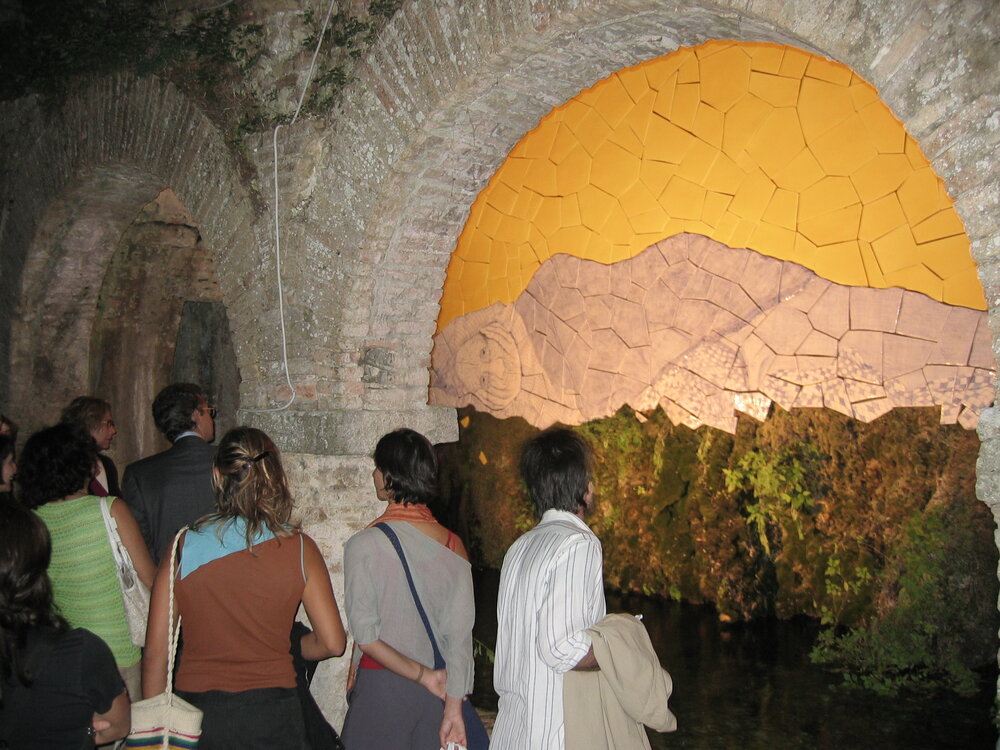“Il riposo del Tempo, progetto per Art to Art IX, è stato inspirato dal silenzio e dalla storia della Fonte Antica di San Gimignano, dall’acqua corrente e dal paesaggio naturale in cui è immersa. Le arcate medievali e il suono dell’acqua sono diventati così il foglio su cui ho iniziato a disegnare, cercando una forma che dialogasse con la struttura architettonica ma mantenesse intatta l’armonia ancestrale del luogo. Seduta di fronte a quell’isolato bacino ho pensato al Tempo, e ho cercato di dare un volto a qualcosa che volto non ha.
I imagined an old man with a face cracked like sun-dried earth, his skin carved by wind and water, his gaze filled with the universe and history. Looking at the basin with its flowing water, I saw the tears of Time, as if he had lain there for years, observing the slow passage of things and human folly. Without a mouth and with ears covered, he has only eyes to stare at the relentless flow of life, and large hands to support himself.
The figure is positioned horizontally, wrapped only in rags, with a large sun-moon behind it, like an energy field connecting the head to the feet, the feet to the head. The image that is either being born—or perhaps dying—behind the character symbolizes the cyclical rising and setting of the sun, an eternal return marked by the rhythm of flowing water. The figure’s body is covered with fabrics of different patterns. The rag has previously been used in art history as a mirror/abstraction of the many faces of the world: the geometric pattern of the fabric as a synthesis of the universe.
Per rappresentare il Tempo, ho scelto i panni di un senza tetto, che potrebbe appartenere a qualsiasi cultura, luogo ed epoca poiché è il corpo di qualcuno che ha come casa il mondo e come problemi quelli assoluti della sopravvivenza. Un uomo che si trova dentro alla vita, ma non nel senso comune in cui la nostra società definisce i valori e che prende il posto di soggetti religiosi e scene di riti, precedentemente protagonisti delle ceramiche nella storia dell’arte.
Nonostante l’opera sia stata concepita come installazione temporanea, è stato importante per me relazionare il lavoro allo spazio come se potesse essere lì per sempre e immaginare come il lento mutare delle stagioni stringerebbe il dialogo fra il luogo e la figura. Se il lavoro venisse murato, con il passare del tempo muschio e erba comincerebbero a germogliare casualmente nelle fessure tra una mattonella e l’altra. Solo a questo punto il mio progetto raggiungerebbe veramente la sua completezza poiche’ quell’antico volto e quell’antico corpo, diventerebbero terra fertile, accettati dalla natura e dalle sue leggi universali.”
— Luisa Rabbia, Arte all’Arte IX, 2004

